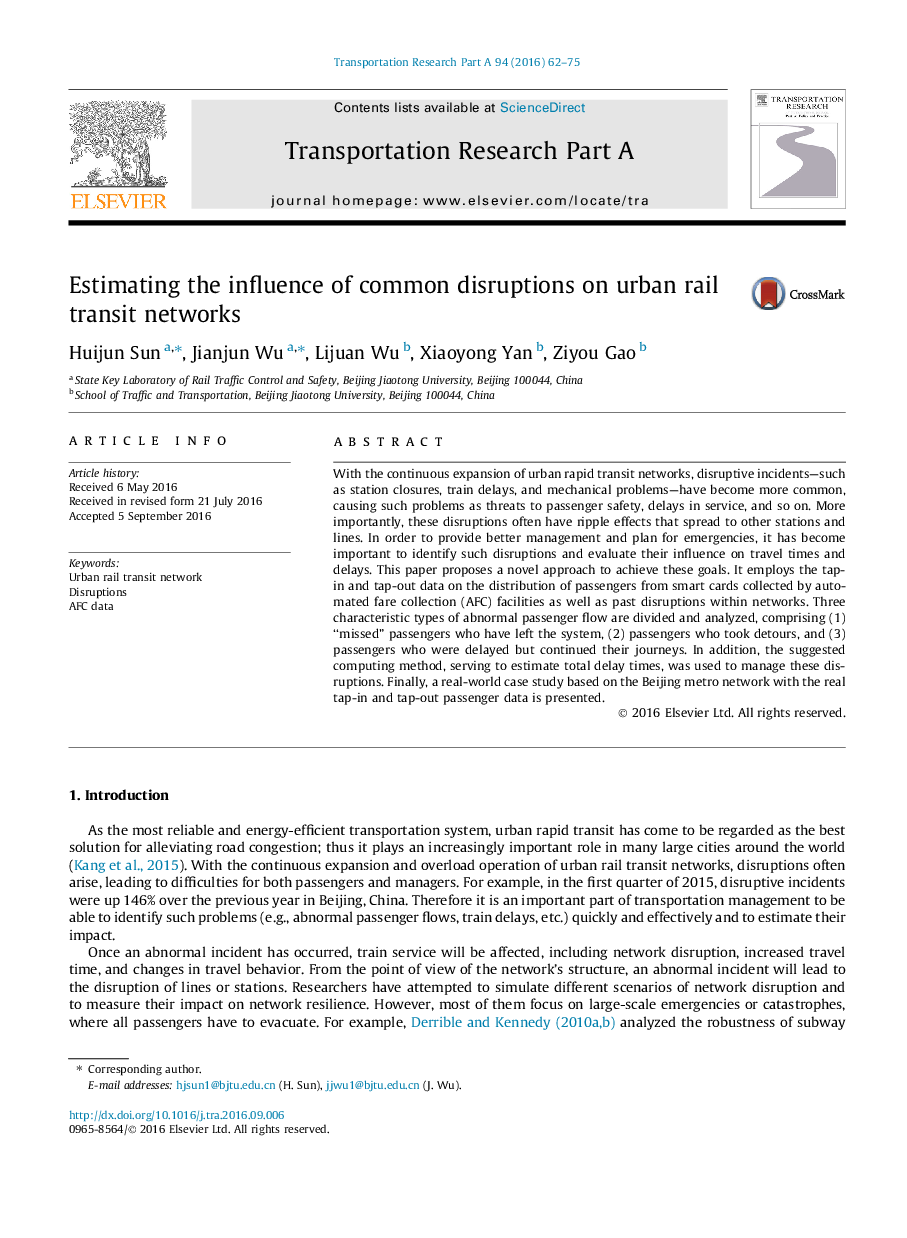| Article ID | Journal | Published Year | Pages | File Type |
|---|---|---|---|---|
| 4929017 | Transportation Research Part A: Policy and Practice | 2016 | 14 Pages |
Abstract
With the continuous expansion of urban rapid transit networks, disruptive incidents-such as station closures, train delays, and mechanical problems-have become more common, causing such problems as threats to passenger safety, delays in service, and so on. More importantly, these disruptions often have ripple effects that spread to other stations and lines. In order to provide better management and plan for emergencies, it has become important to identify such disruptions and evaluate their influence on travel times and delays. This paper proposes a novel approach to achieve these goals. It employs the tap-in and tap-out data on the distribution of passengers from smart cards collected by automated fare collection (AFC) facilities as well as past disruptions within networks. Three characteristic types of abnormal passenger flow are divided and analyzed, comprising (1) “missed” passengers who have left the system, (2) passengers who took detours, and (3) passengers who were delayed but continued their journeys. In addition, the suggested computing method, serving to estimate total delay times, was used to manage these disruptions. Finally, a real-world case study based on the Beijing metro network with the real tap-in and tap-out passenger data is presented.
Related Topics
Physical Sciences and Engineering
Engineering
Civil and Structural Engineering
Authors
Huijun Sun, Jianjun Wu, Lijuan Wu, Xiaoyong Yan, Ziyou Gao,
